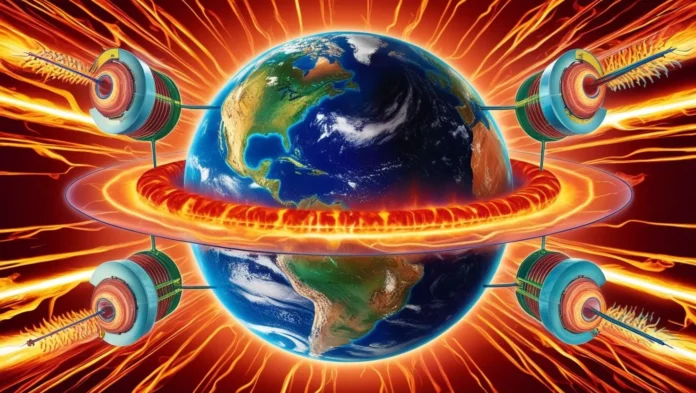Every now and then, scientific breakthroughs make headlines for achieving something that sounds impossible. One such marvel is the recreation of temperatures hotter than the Sun’s core in laboratories on Earth. But it raises a big question: why Earth doesn’t burn, even when we generate such extreme heat? In this article, we explore the science behind this mystery—and why our planet remains perfectly safe.
Contents
Understanding the Numbers: How Hot is “Hotter Than the Sun”?
The core of the Sun reaches around 15 million °C (27 million °F) [NASA Solar Science]. Fusion reactors and high-energy physics labs like CERN or the National Ignition Facility have reported temperatures exceeding 100 million °C.
| Source | Temperature Achieved |
|---|---|
| Sun’s Core | ~15 million °C |
| Tokamak Fusion Reactors | 100+ million °C |
| Laser Fusion Labs | Up to 500 million °C |
Despite these staggering numbers, the danger they pose is vastly misunderstood.
Why Doesn’t the Earth Burn?
Let’s unpack this using three core principles:
1. Scale and Containment
Extreme heat experiments are highly localized. The core of a fusion reactor is smaller than a tennis ball. The heat doesn’t radiate far, and the surrounding equipment is designed to contain it with powerful magnetic fields or vacuum chambers [ITER Tokamak Design].
2. Time Duration
These temperatures are often reached for microseconds. That’s not enough time for heat to spread and cause environmental damage.
3. Energy Density vs. Total Energy
Temperature doesn’t equal danger by itself. A match is hotter than boiling water but poses less threat. Similarly, high-temperature plasma in labs holds very little total energy compared to the planet’s thermal mass.
The Role of Containment Systems
Modern science uses incredibly sophisticated mechanisms to hold back the heat.
Magnetic Confinement
magnetic fields create a donut-shaped trap that suspends plasma away from reactor walls [ITER Fusion Principles].
Inertial Confinement
Laser fusion facilities like NIF use ultra-short laser bursts focused on tiny fuel pellets, compressing them to extreme temperatures within nano-seconds [NIF Laser Fusion].
These systems are built to fail-safe: if the conditions are lost, the plasma instantly dissipates, and no heat lingers.
Real-World Analogy: A Spark in the Ocean
Imagine dropping a red-hot coal into the ocean. It’s hot, sure, but the ocean is massive, and the coal disappears without a trace. That’s how Earth handles these localized superheated events.
Key Takeaways
- Hotter-than-Sun experiments are real but tiny.
- Containment technology prevents environmental exposure.
- Short duration and low energy scale protect the Earth.
Related Concepts on aitreehub.com
- AI-Powered Workflow Automation
- GPT-4 to GPT-5: Key Differences
- Prompt Engineering Explained: A Beginner’s Guide
Expert Insight
According to Dr. Clara Hughes, a plasma physicist at MIT:
“It’s not about the temperature alone; it’s about how much and how long. Earth’s atmosphere and scale are the best natural defense systems we have.”
FAQs
Q1: Is there any risk of these experiments going out of control?
A1: Highly unlikely. Fusion reactions are inherently self-limiting. If stability is lost, the reaction stops instantly.
Q2: Can this heat affect nearby cities or environments?
A2: No. These labs are heavily shielded, and the energy never escapes containment.
Q3: Has any accident occurred from extreme heat experiments?
A3: There have been equipment failures, but none involving dangerous heat release to the environment.
Conclusion
The next time you read a headline claiming “Scientists Create Temperatures Hotter Than the Sun,” take a deep breath. Yes, it’s incredible science, but it’s also completely safe. Through advanced containment, tiny scale, and brief bursts, our planet stays perfectly fine while we push the boundaries of physics.
What do you think about humanity’s quest to replicate the Sun? Share your thoughts, questions, or wild theories in the comments below!
